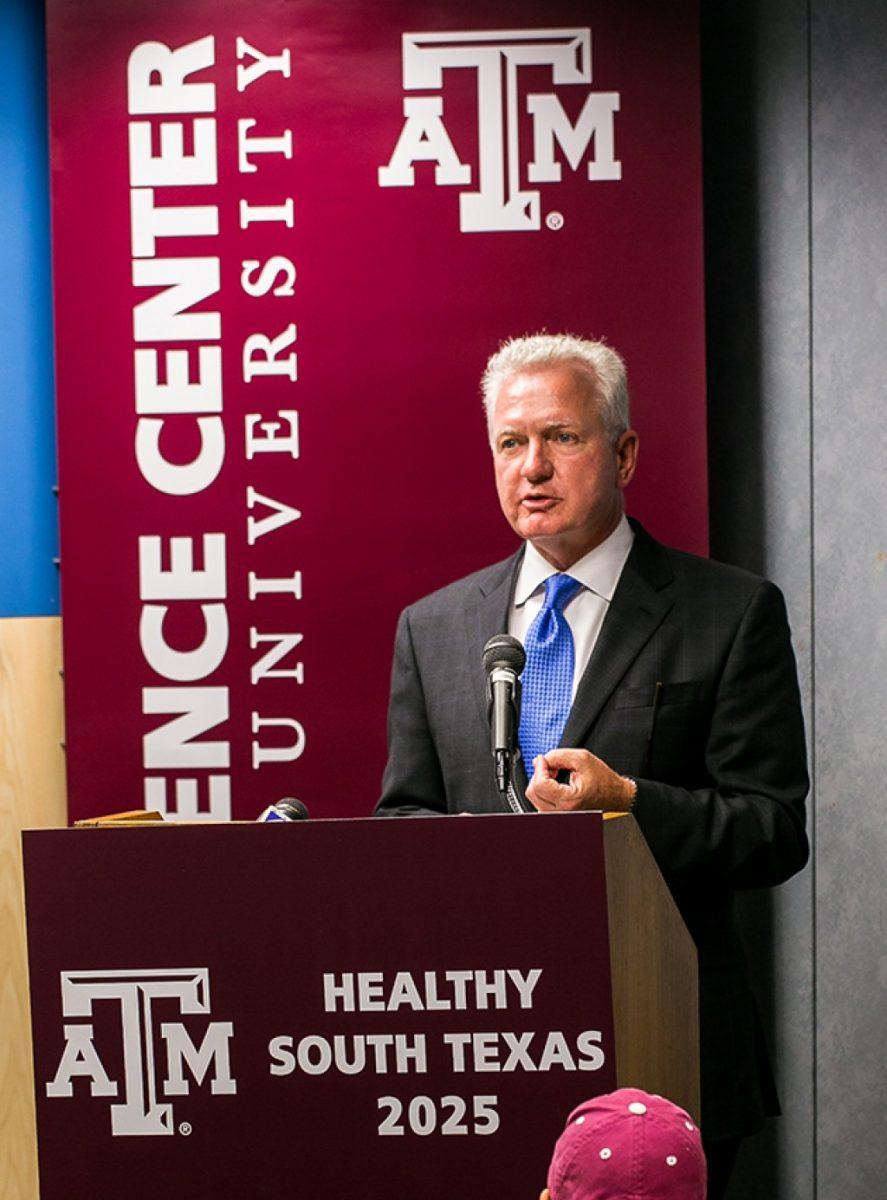The launch of the Healthy Texas Initiative as part of the Texas A&M Institute for Public Health Improvement has inspired an effort to reduce preventable disease with the program’s pilot “Healthy South Texas 2025.”
The program, whose partners include the A&M Health Science Center, the A&M AgriLife Extension Service and the A&M College of Architecture, aims to reduce preventable diseases and their consequences in South Texas by 25 percent by 2025.
The focus was on South Texas from the start for several reasons, but three key factors combined to make it the most viable for the pilot program, said Dr. Brett P. Giroir, CEO of Texas A&M Health Science Center.
“South Texas is a large area of need,” Giroir said. “There are substantial disparities in comparison to the rest of the state. They suffer inordinately from obesity and diabetes, from asthma, from a number of conditions. That means their health is significantly lacking in comparison to the rest of the state.”
Giroir said that there is room for exciting potential in the Rio Grande Valley, which was yet another reason to launch the pilot there.
“ [South Texas] is a young, vibrant region of the state,” Giroir said. “The percentage of young people, the percentage of businesses that are growing, are all very exciting about that region.”
However, Giroir said an overwhelming deciding factor was that the A&M System already has a large presence in the area with the AgriLife Extension service and multiple health science centers serving thousands of people throughout the Valley. It’s an existing infrastructure that would be easy to capitalize on, Giroir said.
“We felt collectively that there was no need to delay a program that was obviously important and very well needed, and we had the motivation, we had the resources, and I think as Aggies you go do it,” Giroir said. “There’s no need to procrastinate.”
Jennifer Saenz, deputy chief of staff for Senator Juan “Chuy” Hinojosa, said that the Rio Grande Valley faces challenges both nutritionally and in the arena of public health. Saenz said that this initiative will help to address these challenges along with the continued support of the Senator who has always supported measures like these.
“The need for not only eating correctly, but having the nutrition available is something I know [Senator Hinojosa] has always advocated for,” Saenz said.
Giroir said that small scale testing has led him to be fairly optimistic about the pilot program in South Texas. If the programs work as efficiently when scaled up, the health and economic benefits could be immense, Giroir said.
“For example, there are literally tens of thousands of patients with diabetes and with asthma, Giroir said.” “We know through our current program with diabetes, for a year-long program we can dramatically improve the control [of asthma] with the proper medication understanding of the medication, and availability of the medication we can dramatically improve the control of diabetic patients. Some of our programs have reduced the admission rate to a hospital of children that have chronic asthma by 44 percent within a three month program.”
Giroir said the economic benefits could be equally as profound for a region where there are so many problems associated with preventable disease.
“In terms of the diabetes program in Corpus Christi — if that were scaled over the 26 county area — just with that program we’ve done a formal economic analysis that we’d save $100 million a year in healthcare costs, just with that targeted diabetes program,” Giroir said. “And while we’re highly motivated to help people individually, we want the state to prosper, and maybe that $100 million goes to scholarships for students at A&M, but its not going to be spent on healthcare costs that don’t need to be done.”
Saenz said health is tied into many aspects of the workforce.
“Healthier people make healthy workers,” Saenz said. “Healthier children do better in school. They’re well nourished and they don’t have diseases they’re worried about dealing with. And the better educated they are, the better they move on to move into our workforce. And if we have a healthy workforce obviously it boosts our economic development and growth.”
Giroir said that although education is important, motivation for behavioral changes is another challenge in itself.
“There are ways to work on the edges, but it’s not a simple solution,” Giroir said. “A part of this is implementing programs that we think work, and part of it is really research and using new technology and new motivational behaviors to try and assist.”
Healthy Texas Initiative launches
June 24, 2014
Dr. Brett Giroir, CEO of Texas A&M Health Science Center, announces the
launch of the Healthy Texas Initiative. Photo provided.
Donate to The Battalion
Your donation will support the student journalists of Texas A&M University - College Station. Your contribution will allow us to purchase equipment and cover our annual website hosting costs.




















